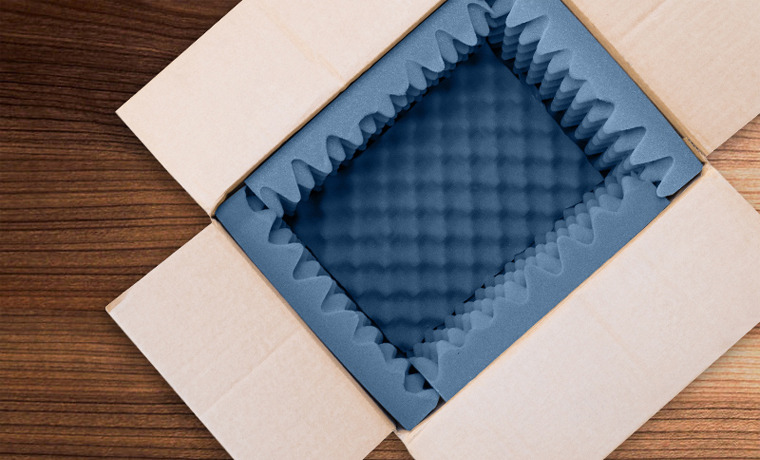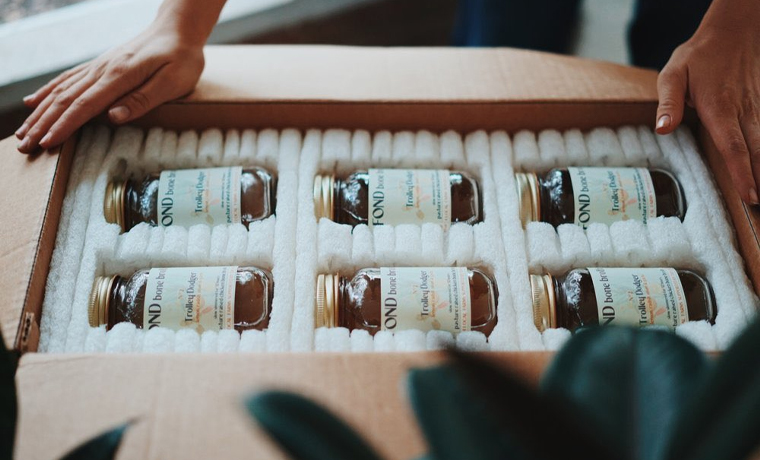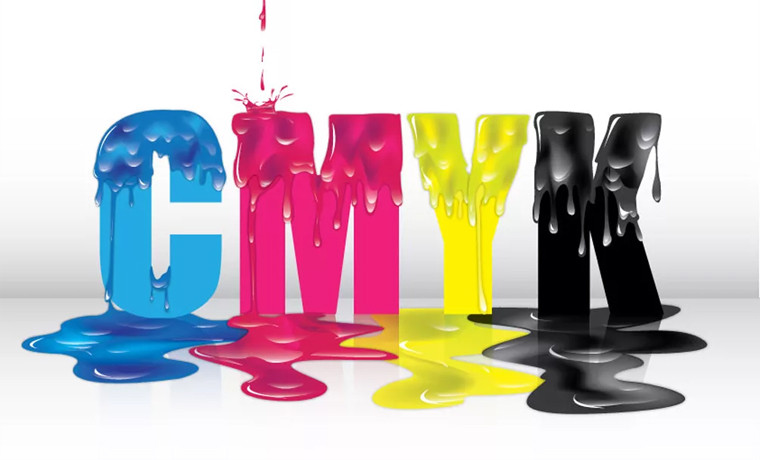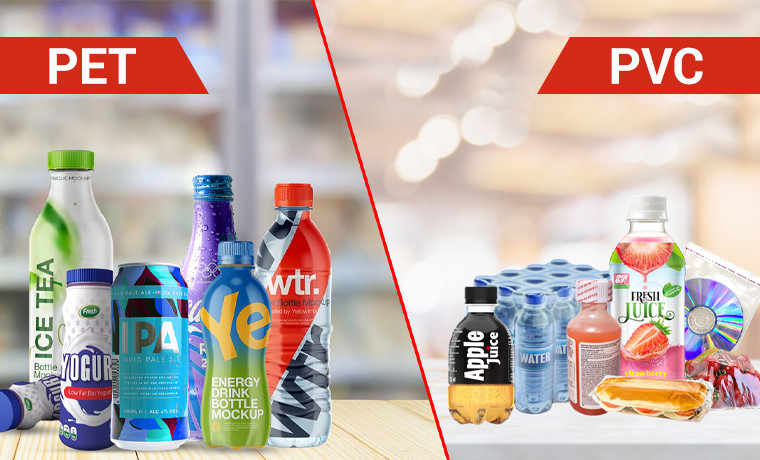Top 12 Foam Packaging Types: How to Choose the Right One for Safe Shipping
September 05, 2025

In today's fast-paced world of logistics where billions of products are shipped daily. Product safety during transit is essential. How to ensure the safety of the products? You must be looking for a cushioning solution. That’s right!
Here, foam packaging plays a vital role in providing a cushioning barrier against shocks, wild vibrations, and temperature fluctuations. Whether you are shipping electronics, glassware, or perishable goods, choosing the right foam packaging type can make a big difference in shipping products in genuine condition. However, you may be unaware that not all foams are created equally.
This guide will discuss the top types of foam packaging, their materials, and applications to help you make an informed decision for your shipping needs. Ready to discover? Here you go!
What is Foam Packaging?
Foam packaging is a thin, lightweight, clean, and protective material made from various foam types that come in different forms like sheets, rolls, peanuts, pre-cut shapes, packing foam blocks, and form inserts. Its excellent cushioning, shock absorption, and insulation properties make it ideal for safeguarding fragile items during storage and shipping.
Unlike traditional wrapping materials like newspapers, foam packaging offers superior protection for:
- Electronics
- Equipment
- Delicate goods
Many companies often use this foam sheet when moving to pack goods or delicate items within the box.
Examples
- Shoes wrapped with this foam are positioned in a box to ensure safety.
- A TV that is likely placed in a box with a flexible foam sheet for protection.
Top 12 Types of Foam Packaging and Their Applications
There are many foam types for packaging available. Most of them are made from polyurethane polyethylene materials and have distinct applications. Popular foam packaging types are:
1. Foam Sheets for Packaging
Lightweight, flexible, and flat sheets. Available in a wide range of thicknesses and sizes. Easy to cut and shape. Ideal for packaging, craft projects, and insulation.
2. Foam Tubing
Crafted to enhance the outer diameter of eating utensils with its soft foam covering. Lightweight, flexible, and offers cushioning and insulation properties. Available in different sizes and suitable for diverse applications.
3. Foam Sleeves
Tubular or pouched-shaped foam sleeves are protective coverings designed to encase individual items for surface protection.
4. Foam Wrap Packaging Sheets
Pre-cut to size sheets of foam are ready to use as a sheet. Protect items during storage, moving, and shipping using flexible and low-density foam material.
5. Foam Chips
Small pieces of foam are used for stuffing, cushioning, and packing.
6. Foam Corner Protectors
Lightweight and shock-absorbing foam is designed to cover sharp corners and edges of various items during shipping, handling, and storage.
7. Foam Trays
Made from expanded polystyrene (EPS) or other foam materials like polyethylene (PE) or polypropylene (PP), a versatile foam packaging solution is used in the food packaging industry.
8. Foam Inserts
Custom made cushionig foam packaging material designed to fit inside the boxes. Crafted from various types of foam and offers different levels of density, flexibility, and protective properties.
9. Egg Crate Foam Padding
Suitable for keeping items in place and restricting their movement during storage and shipping.
10. Closed-Cell Polyethylene Foam
Another shielding foam packaging type with closed-cell polyethylene structures. A lightweight, versatile, and durable packaging option to resist water, moisture, heat, oil-based substances, and chemicals, and absorb shocks.
11. Foam Blocks
Rigid pieces of foam that come in 600mm x 600mm sizes provide support to protect larger items during storage and transportation. It is easy to cut into your desired shape and size. You can also use them to protect smaller items when they are in 300mm x 200mm size.
12. EVA Foam
A durable, flexible, and pliable foam packaging type is a closed-cell foam made from ethylene-vinyl acetate known for its soft, rubbery feel, durability, and water resistance. It is suitable for sports, cosplay, pop-making, home decor, mat-making, and DIY projects. Cutting it into the required shape and size is easy with scissors or knives. This lightweight, soft packing foam is waterproof and ideal for outdoor applications.
Styrofoam For Packaging - A Protective and Defensive Shield To Protect Your Products

Styrofoam is a replacement for polystyrene. It is a lightweight and rigid plastic material popular for its outstanding protective properties, including shock absorption. Its classic sponge structure, full of tiny holes, is perfect for absorbing shocks and vibration and protects delicate items during transportation. It:
- Offers excellent thermal insulation to keep products under complete temperature control in case of temperature fluctuations.
- Lightweight and Easy to fold and mold into any shape to fit products and reduce shipping costs.
- Easy to handle and carry without any frustration.
- Suitable for businesses that require lightweight and affordable foam packaging solutions.
Different Types of Foam Packaging Materials: An Overview
Foam packaging is vital to keep your breakable and vulnerable products safe during storage and shipping. When it comes to exploring its material types, they are distinct in their features and properties.
Expanded Polystyrene (EPS)
Known as Styrofoam, a lightweight, rigid, least expensive, water and shock-absorbent. It comes in foam blocks, produced from solid polystyrene beads, and is a good choice for guarding various items like electronics and appliances.
Polyethylene (PE)
Highly durable closed-cell foam offers exceptional water, chemicals, and mold resistance. It material safeguards heavy machinery parts, robust cables, and delicate pharmaceutical products from damage caused by moisture and harsh environmental conditions.
Polyurethane (PU)
Soft and flexible open-cell foam comes in various colors and shapes. Polyurethane foam packaging excels at carrying weights, cushioning fragile items, and safeguarding products from minor scratches. For delicate items such as TVs, refrigerators, laptops, car bodies, and sensitive items, this is a reasonable choice.
Cross-Linked Polyethylene (XLPE)
It offers superior shock and water absorption. Stiffer and more expensive than polyethylene but suitable to protect high-end and valuable products such as military and pharmaceutical equipment.
Read More: Packing Slips 101: How to Create an Accurate Shipping Slip
Why Should You Use Foam Packaging: Key Benefits
Various types of foam packaging address different needs from ecological concerns to cushioning and protection. Let's explore their advantages and how are serving.
Customizability
Foam packaging is easy to customize in different shapes and variable thickness levels. Easy to mold ensuring a snug fit for various items of different shapes and sizes.
Lightweight
By nature lightweight makes foam packaging an excellent choice for the shipping and logistics industry. This cuts the overall shipping costs and emerges as an economical option.
Cushioning and Protection
\Offers excellent protection to ensure the safe delivery of fragile items such as electronics or delicate glassware.
Shock Absorption
Provides superb shock absorption properties to prevent any kind of damage during transit. The structure of foam materials easily absorbs shocks to prevent breakage even during rough handling.
Insulation
Safeguard items from temperature fluctuations. Ideal for products sensitive to heat or cold and maintains the temperature to preserve the integrity of the products.
Environmental Impact
The greener approach is gaining popularity worldwide. Sustainable foam packaging materials entice eco-conscious consumers. Choosing recyclable foams contributes to reducing waste.
How to Choose The Right Foam Packaging for Shipping

When it comes to shipping your valuable items in a packaging box, it is essential to determine the product:
- Fragility
- Weight
- Size
- Shipping method
- Need for anti-static or anti-microbial protection
It can help you choose a foam packaging material that is stiff and durable to bear the weight of the product in transit.
Assess Your Product: What You're Shipping
Look at your products before shipping. Analyze it carefully. For spoilable products, you must consider a shipping foam to protect them from heat and moisture that can even extend their retail shelf life. If you are shipping items containing fragile surfaces, opt for a lid made from polyethylene (PE), offering stiffness and protection to the products.
So, from foam wrap packaging to thin foam roll, you have plenty of options. It depends on the product packaging requirement, which is ready to transit.
Let’s Wrap Up The Things
Foam packaging is crucial to meeting your logistics challenge. You will agree that it can secure your heat-sensitive products or delicate items during shipping and handling. Each type of foam and material, from polystyrene to crosslinked polyethylene, contains fantastic benefits you will surely want to use to ensure the safe delivery of each product.
We, Custom Product Packaging, take care of every packaging order with a commitment to excellence. Choosing us means partnering with a leading custom packaging manufacturing company and having a team of packaging specialists offering quality packaging at an affordable cost. Please send us your requirements at orders@customproductpackaging.com and begin a journey of matchless packaging innovations with us. Get in touch with us TODAY!





